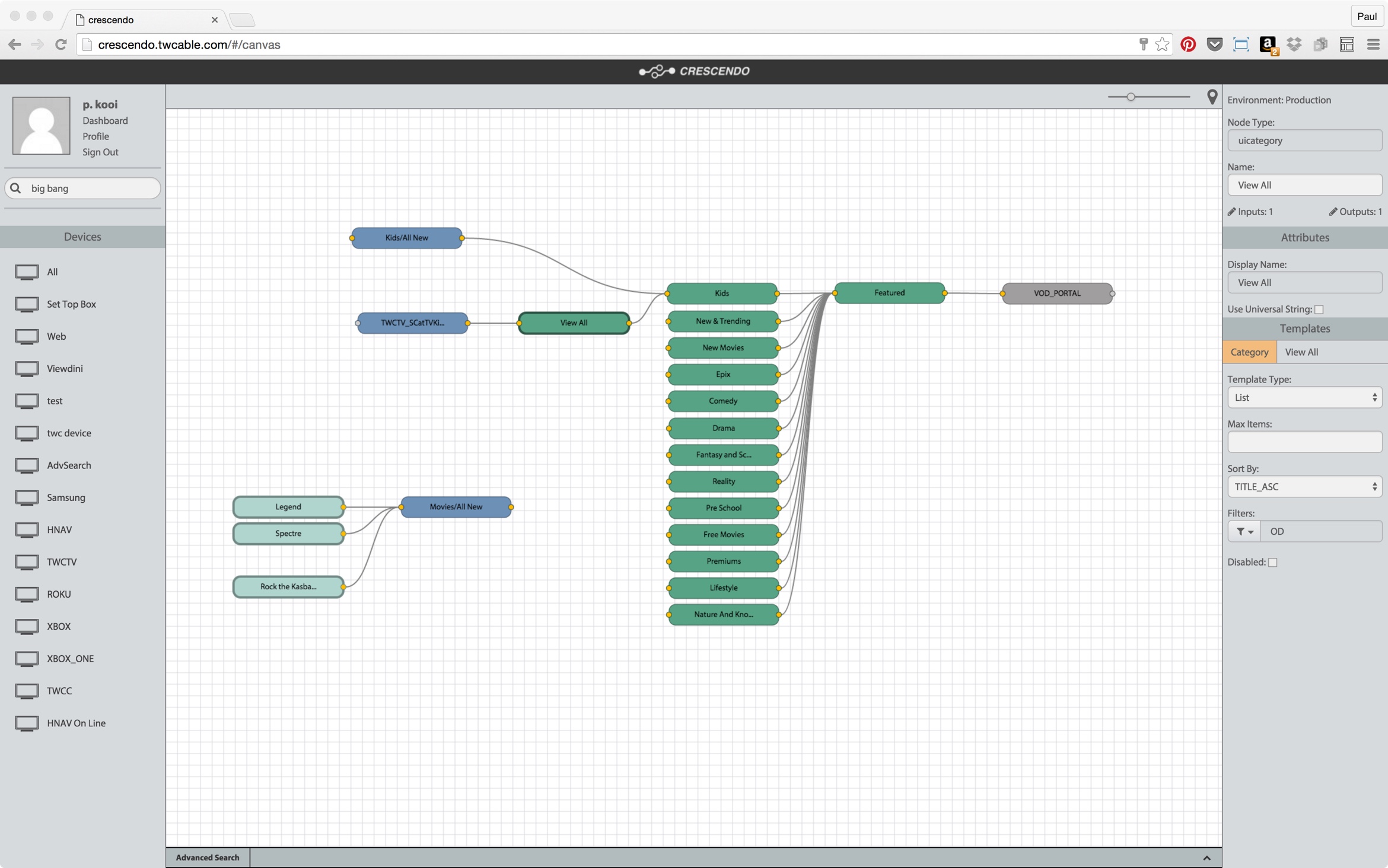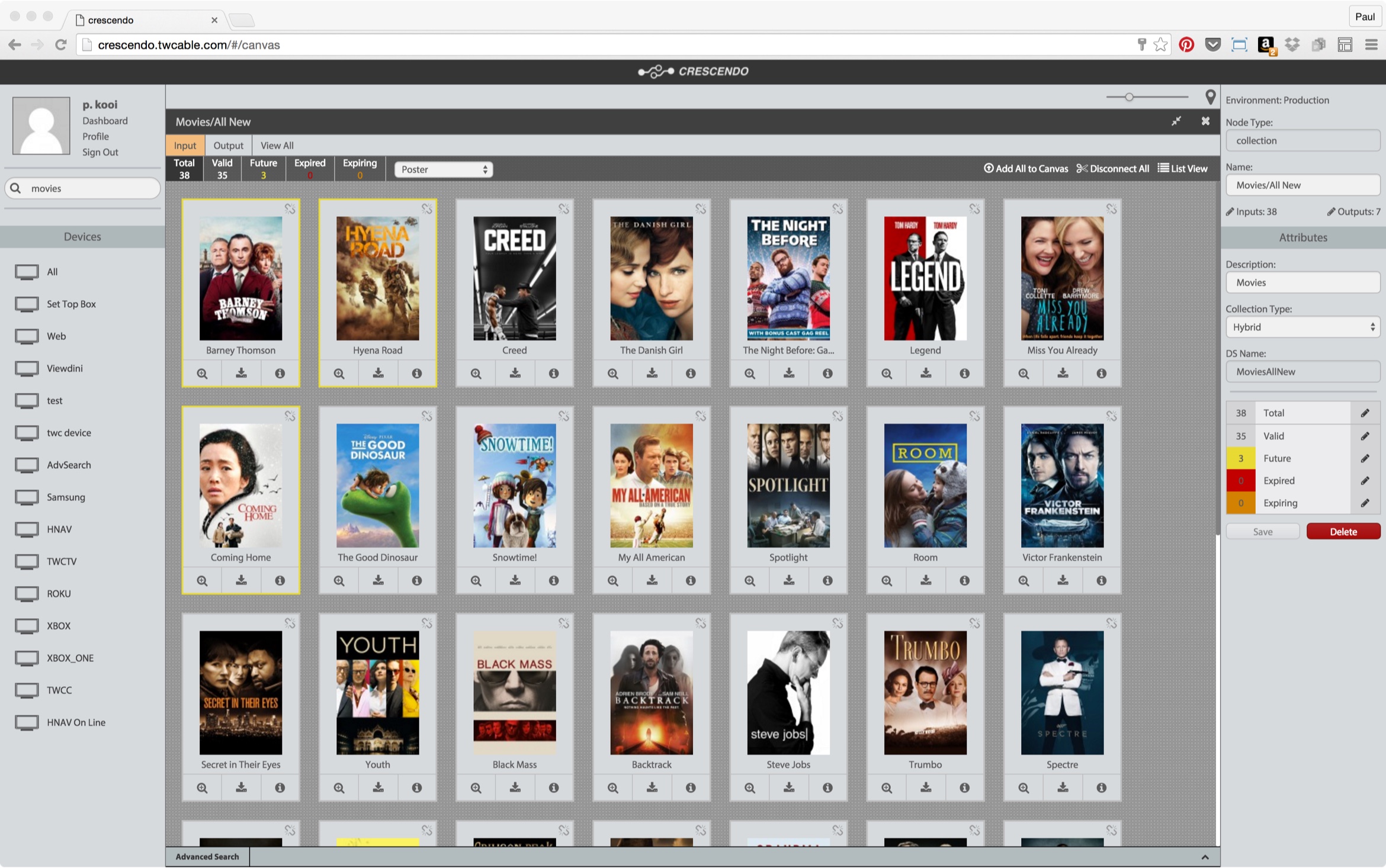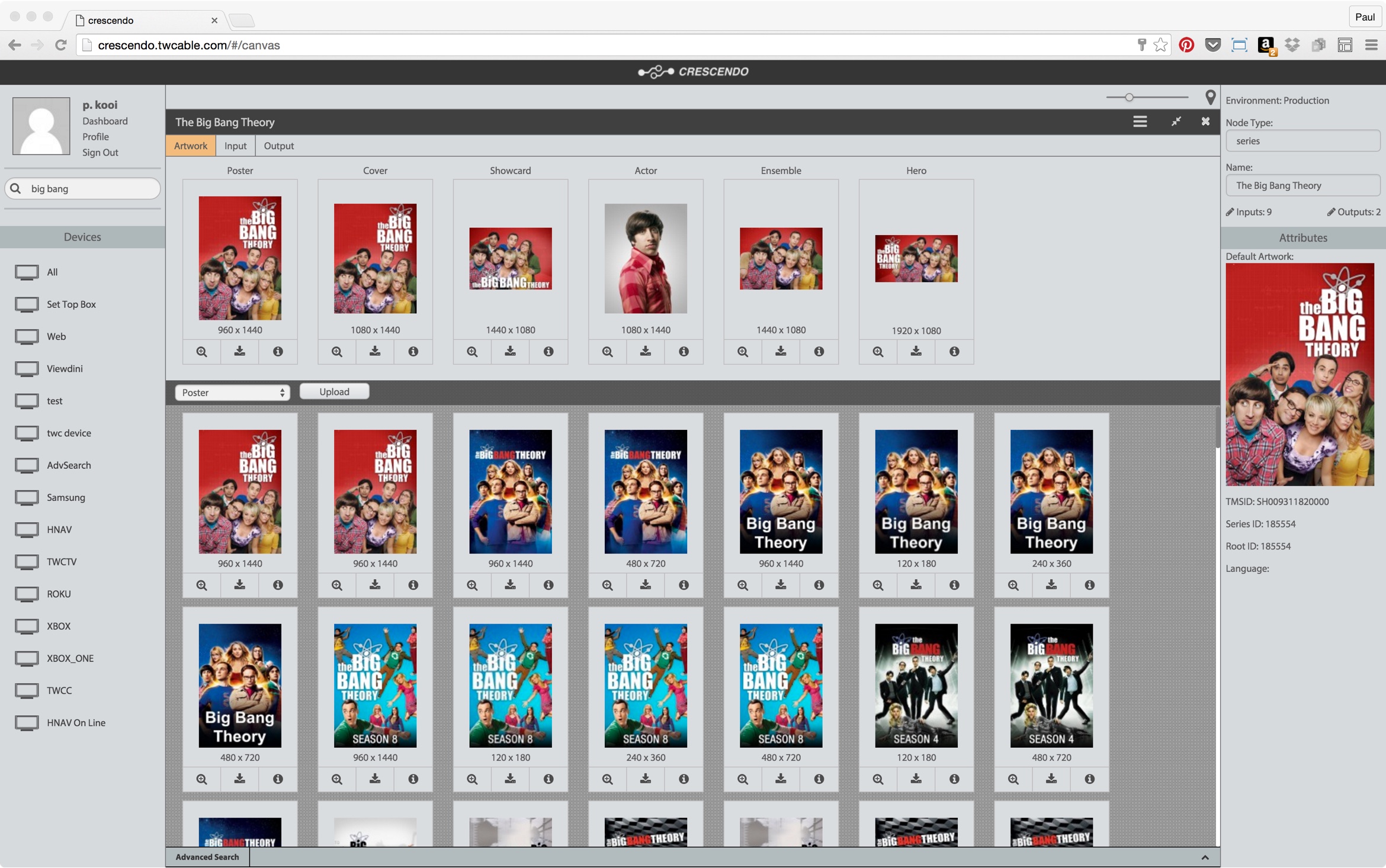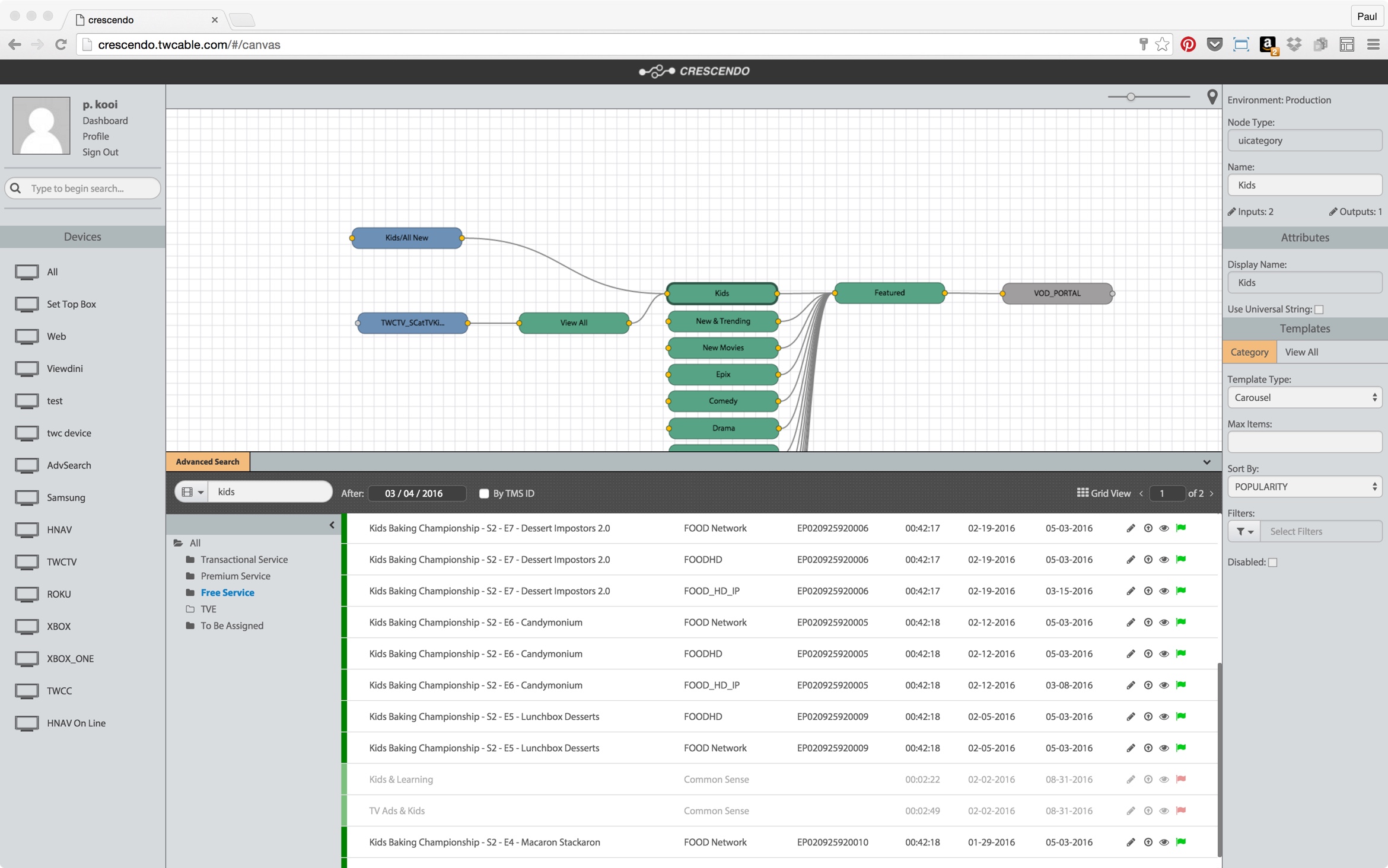Project: Crescendo
Content Management System For Time Warner Cable
Deliverables
Concept, Strategy & Design
Collaborators
Wrecking Ball Media
Crescendo is a proprietary Content Management System I designed for Time Warner Cable. It went into production in 2014 and manages all televised content for over 12 million customers across the company’s foot print. At it’s core it’s been designed to be “future proof”. What that means is that we can only design for the requirements we know of today. The challenge is, that we know that they will change, and change rapidly! So we designed and built Crescendo as a type of lego system where we can extend and develop new kinds of tools and insert them at any point without disrupting the entirety of the system. This allows both the developers and end users to move as rapidly as possible when providing content to their customers.
50k +
On Demand Titles Configured / Month
Content is the lifeblood of any MSO. Crescendo allows the Video Product team to create unique collections of On Demand content and successfully provides thousands of hours of Video On Demand on average per month. It can also scale. The system is easily capable of scaling to 10x that many hours of content company-wide without breaking a sweat.
1800
Custom Images Curated Monthly In 11 Ratios
Crescendo can consume and distribute images and meta data from a variety of sources. Combine that data and spit it out in a consumable way. Our curation team has also been tasked with augmenting the entirety of the library with custom imagery for movies and tv shows that have either missing or poor artwork. These images are added via the Crescendo Edit View and then distributed across our divisions on a daily basis
16mil
Television Subscribers Across The Nation
Crescendo's framework operates very well at scale and allows for a ten thousand foot view across any number of areas within the business. These high-level views are then used to create reports and contribute to the strategy moving forward. Alternatively, this is used to mark the progress of various teams and acts as a tool for operations when needed
14
Platforms Configured & Managed
As business requirements change, so does this tool. When it was conceived of, we supported three platforms. Crescendo is uber-extensible and allows the business to support an infinite number of platforms very easily. Replicate configuration. Replicate curation across those platforms, customize each of them. Or a combination of the two saving us valuable time when working day to day
Support For Multiple Levels Of Detail
Given the wide variety of users and use cases Crescendo allows for multiple Levels of Detail (LOD’s) giving the users an efficient way to tackle the various use cases and then publish the work immediately.
High Level Dashboard

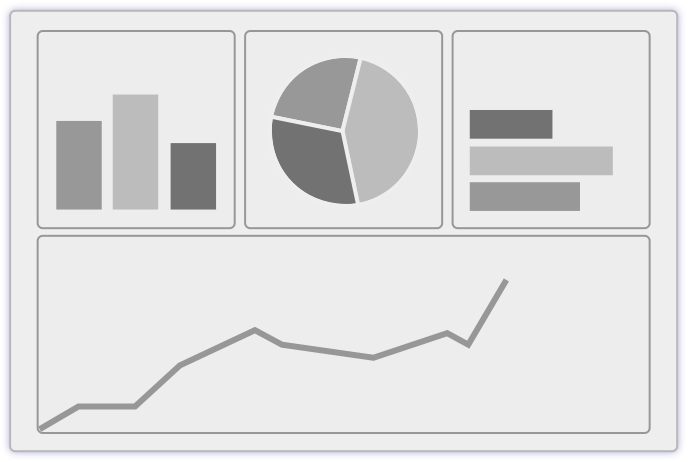
The high level dashboard is a global statistical view of the state of curation and configuration over all or any specific platform. It can be used to generate a variety of reports used to communicate throughout the organization
Low Level Edit


The Low Level, or Edit View allows the user to curate images, add new images to the image server, add, subtract, and manage meta-data on a per series, season, episode, or per movie basis. It also allows for low level curation of collections that appear downstream
Mid Level Canvas

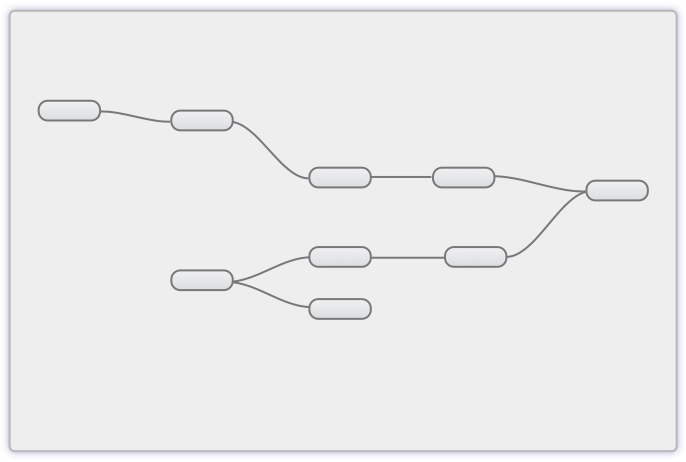
The Mid Level, or Canvas is used to analyze the flow of various data sources and gives the user a quick way to to make new connections in order to make large changes quickly and efficiently without duplication of work or resources.
Node Based System
The origin of the tool actually preceded the project itself. It started off as a “lab week” project and consisted originally as some sketches and then wireframes of a front end tool that would allow the user to curate artwork, create, and manage collections of shows, and possibly edit some metadata.
Once the project got going, however, new requirements were revealed through a series of workshops with product and key stakeholders within the company that caused us to abandon the original design. As we worked through the use cases we realized that there was a strong desire for reporting at a very high level. A need to visualize how the data was structured and how it flowed through the system. There was also the day to day work of configuring UI on various platforms that had to be supported and curation of images and metadata.
“The thing has to be “Future Proof”...it’s just a reality of the business we’re in”
Another tricky requirement was the need to “Future Proof” the design. In a company as large as Time Warner Cable things can move fast and different groups may be moving in different directions on any given day. So the initial set of requirements and use cases that we were designing would almost surely need to be extended and beyond that… expanded.
As a result, we developed a design that would allow for a huge leap in efficiency negating the need to duplicate work across multiple platforms. Our node based system had the added bonus of allowing our developers a framework within which, they could develop new tools for the end user and greatly expand the capabilities of the tool while allowing the current system to stay intact.
1. There are many node types in Crescendo. Each have different rules.


2. When connected… data flows through them obeying the various rules


3. Crescendo supports complex networks of nodes for a variety of tasks


Example
1. First, a network for configuring a UI for a given platform is created. An asset like Big Bang Theory is then connected to the network adding it somewhere within the platforms UI. Once the connection has been made and then published. Big Bang will then be exposed to the customer on a given platform. In this template, the default Image is used at a 2 x 3 aspect ratio. Crescendo is also capable of curating the network logo, associated meta-data, series, season, or episode-specific artwork


Crescendo’s node-based curation system allows the business to curate that same asset across multiple platforms with a couple of clicks allowing the user to avoid unnecessary redundant work. While maintaining an almost infinite level of flexibility


2. Here the user has opened up the edit view and curated different images, at different aspect ratios, within the same template across multiple platforms. Allowing the business to customize the experience based on the capabilities of the various platforms, and play to their individual strengths and weaknesses

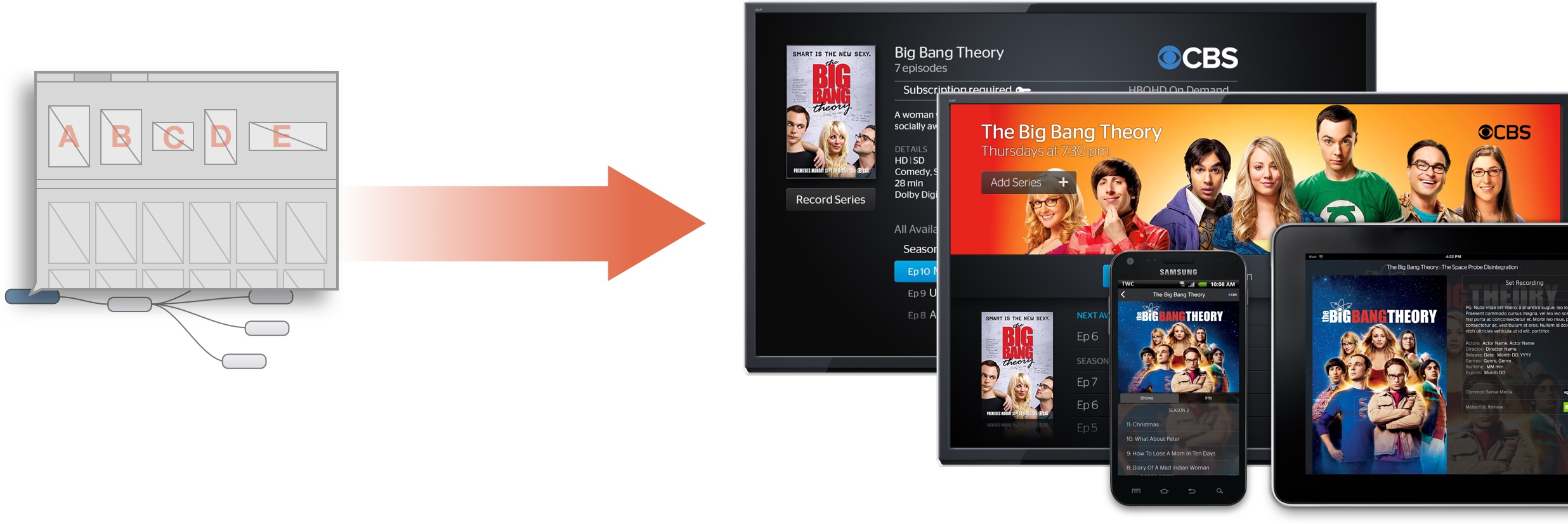
3. Crescendo is also intended to provide multi-variate testing critical to testing any given parameters of a given configuration, curation, or template type


Crescendo UI

